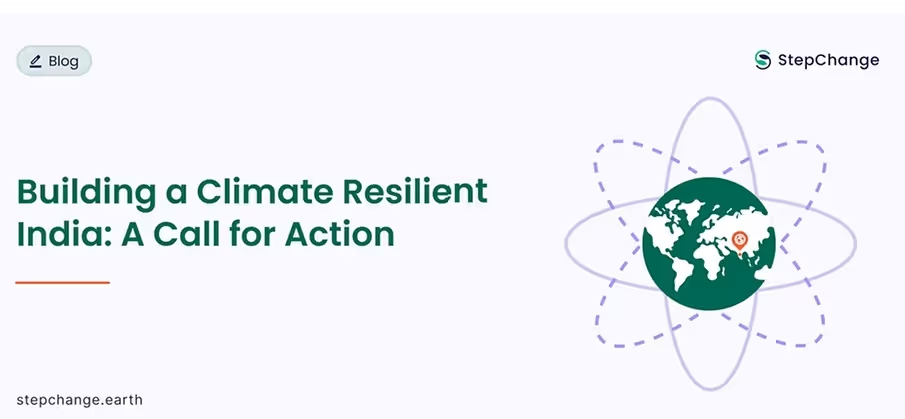
Solutions
Carbon Management
ESG Intelligence
Climate & Nature Risk
Data Registry
Beta
Sector
Get started, schedule a demo or request a free assessment!


As India faces the escalating impacts of climate change, the need for immediate action has never been more urgent. Our unique geography, marked by a diverse landscape and a multitude of natural hazards, makes us particularly vulnerable. From the seismic tremors of the Himalayas to the cyclones battering our coastlines, we face challenges that require not just awareness but decisive action.
India's diverse landscape makes it especially vulnerable to climate change. From the Himalayan tremors to coastal cyclones, the challenges we face demand immediate action. To learn more about specific strategies for building a climate-resilient India, read the first part of this series which dives into five key priorities to mitigate these vulnerabilities and create a more sustainable future for all.
To effectively address these geographic vulnerabilities, we must adopt a comprehensive approach that integrates disaster risk reduction and climate change adaptation into our development plans. Some key priorities include:
These five priorities are interconnected and require a holistic approach to address the complex challenges posed by geographic vulnerabilities. By strengthening early warning systems, investing in resilient infrastructure, promoting sustainable land use, empowering vulnerable communities, and enhancing coordination among stakeholders, we can build a more resilient and sustainable future for India.
First and foremost, enhancing our early warning systems is crucial. Timely alerts can save lives and property during natural disasters, allowing communities to prepare and respond effectively. For example, during Cyclone Fani in 2019, Odisha's effective early warning system allowed for the evacuation of approximately 1.47 million people before the cyclone made landfall. By investing in advanced technology and community training, we can ensure that everyone is prepared when disaster strikes.
Our infrastructure must be designed to withstand the impacts of natural hazards. This involves constructing roads, bridges, and buildings that can endure floods, earthquakes, and extreme weather events. By prioritizing resilient infrastructure, we can protect communities and minimize economic losses. The Assam government has allocated ₹1,200 crores for developing flood control infrastructure, including embankments and flood barriers for the 2023–24 period, such investments are vital for ensuring the safety and sustainability of our communities.
Sustainable land-use practices are essential for mitigating risks associated with climate change. By adopting eco-friendly agricultural techniques and protecting our forests, we can enhance our natural defenses against floods and landslides while ensuring food security for our growing population. The introduction of flood-resistant crop varieties in Assam has been a significant step toward sustainable agriculture, allowing farmers to adapt to changing climatic conditions.
Empowering local communities is crucial in building resilience against climate change. We must invest in capacity-building programs that equip individuals with the skills and knowledge needed to adapt to changing environmental conditions. Supporting livelihoods through diversification can also reduce dependence on vulnerable sectors. The Pradhan Mantri Fasal Bima Yojana (PMFBY) provides insurance coverage for around 56% of farmers in Assam, helping them recover from crop losses due to natural calamities.
Finally, effective coordination among various levels of government, NGOs, and local communities is vital. Collaborative efforts can lead to more effective disaster management strategies and ensure that resources are used efficiently. The Coalition for Disaster Resilient Infrastructure (CDRI) aims to facilitate partnerships among governments, multilateral development banks, and UN agencies to promote quality infrastructure that is both climate- and disaster-resilient
Building a climate-resilient India requires a concerted effort from all stakeholders, including the government, private sector, and civil society. By prioritizing early warning systems, resilient infrastructure, sustainable practices, and stakeholder coordination, we can mitigate the impacts of climate change and create a more sustainable and equitable future for all.
As we commemorate World Environmental Health Day 2024, let us renew our commitment to building a more resilient and sustainable India. By working together to address the environmental and geographic vulnerabilities and prioritizing climate action, the country can protect its people, safeguard its natural resources, and ensure a brighter future for generations to come.

.svg)